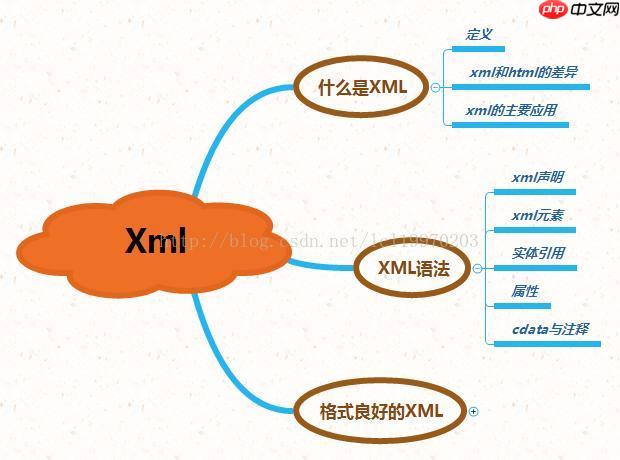powershell读取和修改xml配置文件的核心是将其转换为可操作的[xml]对象并保存更改;1. 使用[xml]$xmldata = get-content读取xml文件,大文件建议用xmlreader提升性能;2. 通过对象属性或xpath导航结构,如$xmldata.root.childnode访问节点;3. 修改值、添加节点用createelement和appendchild、删除用removechild;4. 用$xmldata.save()保存更改,会覆盖原文件;5. 处理命名空间需配合selectsinglenode与xmlnamespacemanager;6. 使用try-catch处理异常,确保操作安全;7. 大文件优化可采用xmlreader流式读取,避免内存过高;8. 安全修改需先备份文件,用copy-item创建副本,try中执行修改,catch中恢复备份,finally删除备份;9. 添加节点时先创建元素和属性,再挂载到目标父节点下并保存;10. 建议修改前验证xml schema以确保结构合规。

直接来说,PowerShell读取和修改XML配置文件,核心在于将XML文件转换为PowerShell可以操作的对象,然后进行增删改查,最后保存回文件。
解决方案:
读取XML文件: 使用
[xml]$xmlData = Get-Content -Path "your_config.xml"
$xmlData
[xml]
XmlReader
导航XML结构: XML对象现在可以像操作普通对象一样操作。例如,要访问根节点的属性,可以使用
$xmlData.root.attributeName
$xmlData.root.childNode
修改XML数据: 直接修改对象的属性或节点的值。 例如,
$xmlData.root.childNode.attribute = "new value"
$xmlData.root.AppendChild($xmlData.CreateElement("newNode"))$xmlData.root.RemoveChild($nodeToRemove)
$nodeToRemove
保存XML文件: 使用
$xmlData.Save("your_config.xml")处理命名空间: 如果XML文件使用了命名空间,需要使用
SelectSingleNode
SelectNodes
$namespace = @{
"ns" = "http://yournamespace.com"
}
$xpath = "//ns:yourNode"
$node = $xmlData.SelectSingleNode($xpath, $namespace)错误处理: 务必使用
try-catch
PowerShell读取XML配置文件慢怎么办?
如果XML文件非常大,一次性加载到内存可能会导致性能问题。这时,可以考虑使用
XmlReader
Get-Content
XmlReader
$reader = [System.Xml.XmlReader]::Create("your_config.xml")
while ($reader.Read()) {
if ($reader.NodeType -eq [System.Xml.XmlNodeType]::Element -and $reader.Name -eq "yourNode") {
# 处理节点
Write-Host $reader.GetAttribute("attributeName")
}
}
$reader.Close()使用
XmlReader
如何使用PowerShell向XML配置文件中添加新的节点?
要添加新的节点,首先需要创建新的节点对象,然后将其添加到XML文档中。可以使用
CreateElement
CreateAttribute
$newNode = $xmlData.CreateElement("newNode")
$newAttribute = $xmlData.CreateAttribute("attributeName")
$newAttribute.Value = "attributeValue"
$newNode.Attributes.Append($newAttribute)
$xmlData.root.AppendChild($newNode)
$xmlData.Save("your_config.xml")如果需要添加更复杂的节点结构,可以递归地创建子节点,并将它们添加到父节点中。需要注意的是,添加节点后,需要使用
Save
如何在PowerShell中安全地修改XML配置文件?
安全地修改XML配置文件意味着在修改之前备份文件,并在修改过程中处理可能出现的错误。可以使用
Copy-Item
Copy-Item "your_config.xml" "your_config.xml.bak" -Force
try {
# 修改XML文件的代码
$xmlData.Save("your_config.xml")
}
catch {
# 发生错误,恢复备份文件
Write-Error "修改XML文件失败:$($_.Exception.Message)"
Copy-Item "your_config.xml.bak" "your_config.xml" -Force
}
finally {
# 删除备份文件
Remove-Item "your_config.xml.bak"
}使用
try-catch
try
catch
finally
以上就是如何在PowerShell中读取和修改XML配置文件?的详细内容,更多请关注php中文网其它相关文章!

每个人都需要一台速度更快、更稳定的 PC。随着时间的推移,垃圾文件、旧注册表数据和不必要的后台进程会占用资源并降低性能。幸运的是,许多工具可以让 Windows 保持平稳运行。

Copyright 2014-2025 //m.sbmmt.com/ All Rights Reserved | php.cn | 湘ICP备2023035733号